India’s space program yesterday suffered a huge setback after it lost contact with an uncrewed spacecraft moments before it was due to make a historic soft landing on the moon.
Indian Prime Minister Narendra Modi sought to comfort glum scientists and a stunned nation from the lunar program’s command center in Bengaluru, saying that India was “proud” and clasping the visibly emotional mission chief in a lengthy bear hug.
The emerging Asian giant had hoped to become just the fourth country after the US, Russia and regional rival China to make a successful moon landing, and the first on the lunar South Pole after the mission’s launch in July.
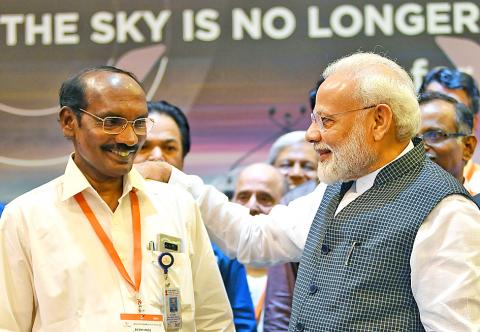
Photo: AFP / Indian Press Information Bureau
However, early yesterday, as Modi looked on and millions watched with bated breath nationwide, Vikram, the lander named after the father of India’s space program, went silent just 2.1km above the lunar surface.
“The Vikram lander descent was [going] as planned and normal performance was observed,” Indian Space Research Organisation Chairman Kailasavadivoo Sivan said.
“Subsequently, the communication from the lander to the ground station was lost,” he said in a stunned operations room. “The data is being analyzed.”
However, the Chandrayaan-2 (“Moon Vehicle 2”) orbiter, which is to circle and study the moon remotely for a year, is “healthy, intact, functioning normally and safely in the lunar orbit,” the agency said.
Freshly re-elected Modi had hoped to bask in the glory of a successful mission, but he deftly turned into consoler-in-chief in a speech at mission control broadcast live on TV and to his 50 million Twitter followers.
“Sisters and brothers of India, resilience and tenacity are central to India’s ethos. In our glorious history of thousands of years, we have faced moments that may have slowed us, but they have never crushed our spirit,” Modi said.
“We have bounced back again... This is the reason our civilization stands tall,” he said. “When it comes to our space program, the best is yet to come.”
Chandrayaan-2 took off on July 22 carrying an orbiter, lander and rover almost entirely designed and made in India, a week after an initial launch was halted just before blastoff.
The agency had acknowledged before the soft landing that it was a complex maneuver, which Sivan called “15 minutes of terror.”
It was carrying rover Pragyan — “wisdom” in Sanskrit — which was due to emerge several hours after touchdown. The rover was expected to explore craters for clues on the origin and evolution of the moon, and also for evidence on how much water the polar region contains.
The Chandrayaan-2 space mission — India’s most ambitious so far — stood out because of its low cost of about US$140 million.
The US spent the equivalent of more than US$100 billion on its Apollo missions.
India is preparing Gaganyaan, its first crewed space mission, with the Indian Air Force on Friday announcing that the first level of selection of potential astronauts was complete.
The South Asian nation also hopes to land a probe on Mars.
In 2014, it became only the fourth nation to put a satellite into orbit around the Red Planet.
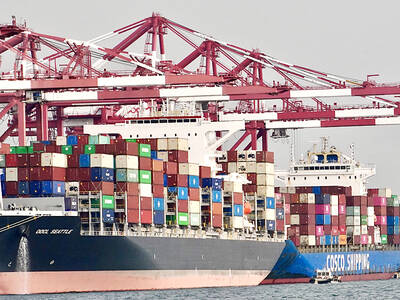
Taiwan’s exports soared to an all-time high of US$61.8 billion last month, surging 49.7 percent from a year earlier, as the global frenzy for artificial intelligence (AI) applications and new consumer electronics powered shipments of high-tech goods, the Ministry of Finance said yesterday. It was the first time exports had exceeded the US$60 billion mark, fueled by the global boom in AI development that has significantly boosted Taiwanese companies across the international supply chain, Department of Statistics Director-General Beatrice Tsai (蔡美娜) told a media briefing. “There is a consensus among major AI players that the upcycle is still in its early stage,”
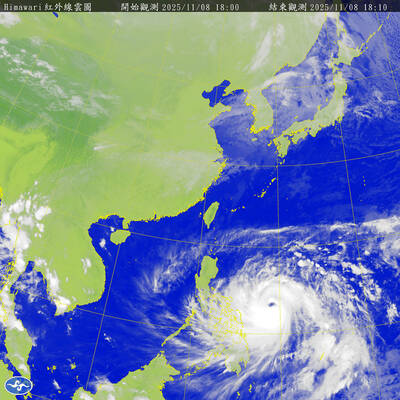
The Central Weather Administration (CWA) yesterday said it expected to issue a sea warning for Typhoon Fung-Wong tomorrow, which it said would possibly make landfall near central Taiwan. As of 2am yesterday, Fung-Wong was about 1,760km southeast of Oluanpi (鵝鑾鼻), Taiwan’s southernmost point, moving west-northwest at 26kph. It is forecast to reach Luzon in the northern Philippines by tomorrow, the CWA said. After entering the South China Sea, Typhoon Fung-Wong is likely to turn northward toward Taiwan, CWA forecaster Chang Chun-yao (張峻堯) said, adding that it would likely make landfall near central Taiwan. The CWA expects to issue a land
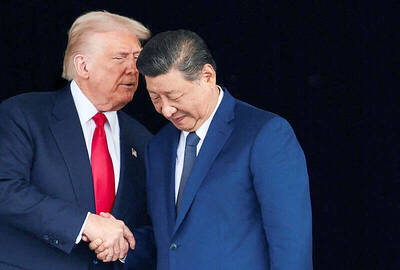
‘SECRETS’: While saying China would not attack during his presidency, Donald Trump declined to say how Washington would respond if Beijing were to take military action US President Donald Trump said that China would not take military action against Taiwan while he is president, as the Chinese leaders “know the consequences.” Trump made the statement during an interview on CBS’ 60 Minutes program that aired on Sunday, a few days after his meeting with Chinese President Xi Jinping (習近平) in South Korea. “He [Xi] has openly said, and his people have openly said at meetings, ‘we would never do anything while President Trump is president,’ because they know the consequences,” Trump said in the interview. However, he repeatedly declined to say exactly how Washington would respond in
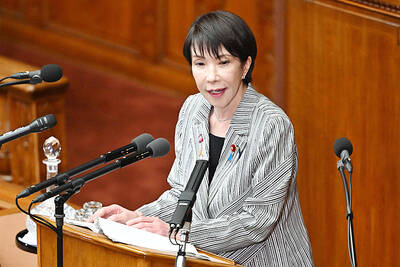
Japanese Prime Minister Sanae Takaichi said yesterday that China using armed force against Taiwan could constitute a "survival-threatening situation" for Japan, allowing the country to mobilize the Japanese armed forces under its security laws. Takaichi made the remarks during a parliamentary session yesterday while responding to a question about whether a "Taiwan contingency" involving a Chinese naval blockade would qualify as a "survival-threatening situation" for Japan, according to a report by Japan’s Asahi Shimbun. "If warships are used and other armed actions are involved, I believe this could constitute a survival- threatening